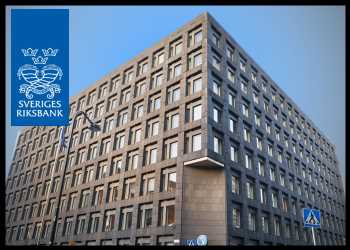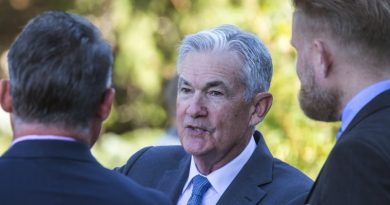Riksbank Lifts Key Rate; Signals More Hikes
Sweden’s central bank raised its key interest rate and decided to reduce the size of balance sheet in the second half of the year, taking a U-turn from its dovish stance.
The Executive Board of Riksbank decided to lift the repo rate unexpectedly to 0.25 percent from 0.00 percent. This was the first hike since January 2020, when the rate was lifted to zero.
The bank now forecast two to three rate hikes this year, and plans to take the rate finally somewhat below 2 percent at the end of the three-year forecast period.
The decision was in stark contrast to its previous stance, as the bank had earlier suggested that the first rate hike would take place in the second half of 2024.
“Whether the Riksbank will deliver two or three hikes by the end of this year will depend on the persistence of inflationary pressures as well as the magnitude of the economic impact from the Russia-Ukraine conflict,” ING forex strategist Francesco Pesole said.
The Swedish wage negotiations are set to end in spring next year, and a significantly higher outcome than three years ago could force the Riksbank to deliver more than the two or three hikes as projected, Pesole added.
The central bank had purchased securities solely to compensate for maturities in the portfolio after the asset purchase programme came to an end at the turn of the year.
Policymakers decided to reduce the pace of asset purchases during the second half of the 2022, so that the holdings begin to decline.
The Riksbank will buy bonds for SEK 37 billion during the second half of the year, which is half the purchases made during the first half of the year.
The bank also decided to cease purchasing treasury bills as of April 28.
The board observed that inflation is set to remain high due to higher global commodity and shipping prices.
“However, the Riksbank can conduct monetary policy to counteract the high inflation becoming entrenched in price-setting and wage-formation, and ensure that inflation returns to the target after some time,” the bank said.
With this monetary policy, inflation is expected to fall back next year and be close to 2 percent from 2024.
The Riksbank said the Swedish economy and the economies in the rest of the world are entering a calmer phase of growth, but economic activity is nevertheless judged to remain good.
The bank downgraded its domestic growth outlook for this year to 2.8 percent from 3.6 percent. Similarly, the projection for next year was trimmed to 1.4 percent from 2 percent and that for 2024 to 1.4 percent from 1.7 percent.
The consumer price inflation is seen at 6 percent this year, up sharply from the prior outlook of 2.9 percent. Likewise, the forecast for 2023 was raised to 5.0 percent from 2.0 percent, and that for 2024 to 2.8 percent from 2.4 percent.
Data released by Statistics Sweden showed that the Swedish economy contracted in the first quarter by 0.4 percent sequentially, due to the weakness registered during January and February. Nonetheless, the rate was slower than the 0.5 percent fall that economists had expected.
On a yearly basis, GDP grew 3.0 percent versus the expected growth of 5.4 percent.
In March, GDP rose 1.0 percent month, following a 0.3 percent drop in February and 0.9 percent fall in January.
Separately, the statistical office said retail sales volume grew 0.2 percent in March from February. Sales in durables decreased 0.5 percent, while consumable sales gained 0.3 percent. Year-on-year, sales grew 1.2 percent.
Elsewhere, a survey from the National Institute of Economic Research revealed that economic confidence remained at an elevated level despite a fall in April. The corresponding index eased to 109.5 from 110.3 in March.
The manufacturing and retail indicators lost ground, while the other sectors improved slightly. Despite the uncertainty in the economy, business confidence remains very strong, the survey showed.
The consumer confidence indicator climbed 1.6 points to 74.9 in April. Still it remained weak, the agency said.
Source: Read Full Article




